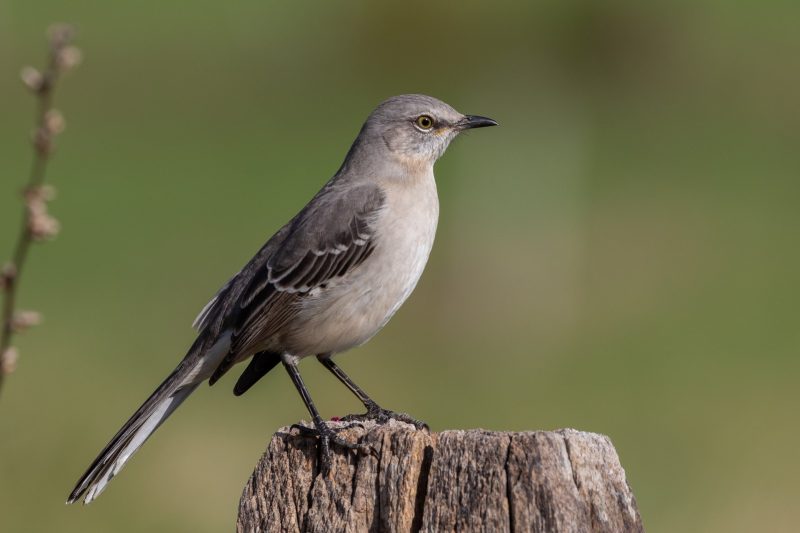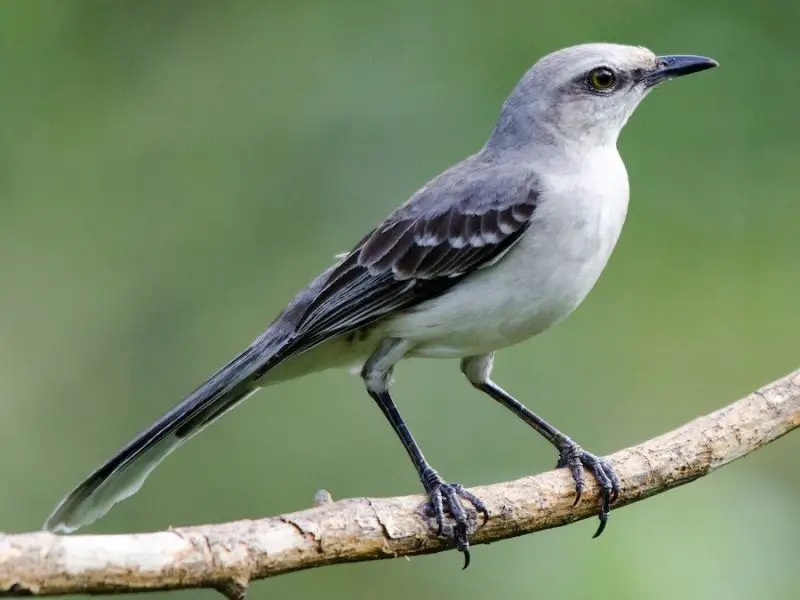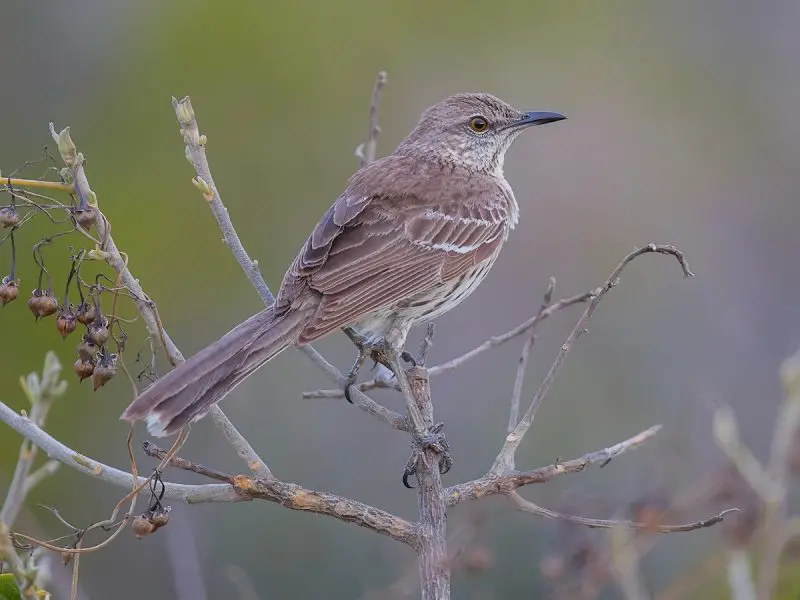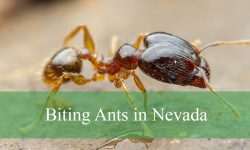Texas skies and backyards are alive with the songs of mockingbirds, offering birdwatchers a chance to spot three fascinating species.
From the familiar Northern Mockingbird to the rarer Tropical and Bahama Mockingbirds, each species displays unique behaviors, vocal talents, and habitat preferences. Observing them provides insight into their territorial displays, mimicry skills, and feeding habits.
Whether wandering city parks, rural fields, or southern scrublands, birdwatchers can enjoy the melodic calls and vibrant activity of these clever birds throughout the year.
Different Types of Mockingbirds Found in Texas
Northern Mockingbird (Mimus polyglottos)

The Northern Mockingbird is easily recognized by its medium size, approximately 8–11 inches in length, with a wingspan ranging from 12 to 15 inches. Its upperparts are light gray, with paler underparts, and it displays two prominent white wing patches visible during flight. The tail is long and dark, tipped with white, and the legs are slender and black. Its eyes are dark, giving a keen, alert expression.
Northern Mockingbirds are renowned for their vocal abilities, capable of mimicking other birds, insects, and even mechanical sounds. Males sing frequently throughout the day, especially during the breeding season, to defend their territory and attract mates. Their song can include multiple phrases repeated several times, often interspersed with abrupt changes in pitch and style.
Behaviorally, Northern Mockingbirds are territorial and aggressive toward intruders, including larger birds. They are often observed perching on exposed branches, fences, or rooftops while surveying their territory. They may perform dramatic wing-flashing displays to intimidate rivals or predators.
In terms of diet, these birds feed on a combination of insects such as beetles, grasshoppers, and caterpillars, as well as fruits, berries, and seeds. They often forage on the ground, hopping and flicking leaves to uncover prey. In urban areas, they are adaptable and may feed from bird feeders or fallen fruit.
Northern Mockingbirds inhabit a wide range of habitats in Texas, from urban neighborhoods and suburban parks to open fields and forest edges. They are year-round residents throughout the state, preferring areas with scattered trees or shrubs for nesting. Nests are cup-shaped and usually built in dense shrubs or low trees, with 2–6 eggs laid per clutch during the breeding season from March to July.
Tropical Mockingbird (Mimus gilvus)

The Tropical Mockingbird is slightly smaller than the Northern Mockingbird, measuring 7.5–10 inches in length with a wingspan of 11–14 inches. Its plumage is darker gray, with subtle white wing bars that are less conspicuous in flight. The tail is long and dark, often fanned during display, and the underparts are light gray to whitish. Its bill is slightly more slender and pointed than the Northern Mockingbird’s, adapted for insect hunting.
Tropical Mockingbirds are vocal but generally quieter than Northern Mockingbirds. Their songs are melodious and often include mimicry of other bird calls. They sing throughout the day, particularly in the morning, with males defending territories through repeated vocalizations.
These birds are active and agile, often seen hopping on the ground in search of food or chasing insects midair. They exhibit territorial behavior, although less aggressive than Northern Mockingbirds. Pairs may remain in the same territory throughout the year, with occasional displays of wing-fanning and tail-flashing.
Tropical Mockingbirds feed on a mix of insects, small fruits, and seeds. In southern Texas, they are commonly seen foraging along roadsides, scrublands, and cultivated areas. They may also feed from fruiting trees and shrubs in semi-urban areas, especially in the Rio Grande Valley.
Their habitat preference includes semi-arid scrub, thorny thickets, and open areas with scattered vegetation. In Texas, sightings are largely concentrated in southernmost counties, making them less common than Northern Mockingbirds. Breeding typically occurs from March to June, with nests placed in dense shrubs or small trees.
Bahama Mockingbird (Mimus gundlachii)

The Bahama Mockingbird is a medium-sized bird, approximately 8–10 inches in length, with a wingspan of 12–14 inches. Its plumage is darker gray-brown compared to the Northern Mockingbird, with faint streaking on the breast and less conspicuous white wing patches. The tail is long and dark, with subtle white tips that may be visible during flight. Its bill is strong and slightly curved, suitable for handling a variety of foods.
Bahama Mockingbirds are known for their mimicry, though they are generally quieter and less frequent singers than Northern or Tropical Mockingbirds. Their vocalizations are softer and more melodious, consisting of sequences of varied notes often repeated multiple times. Males sing to defend territory and court females but are less conspicuous overall.
Behaviorally, Bahama Mockingbirds are more secretive, preferring dense thickets and coastal scrub. They often forage on the ground for insects, fruits, and small lizards, using a combination of hopping and flicking leaf litter. They are less aggressive toward other birds but will defend prime feeding areas if needed.
Their diet includes insects, berries, small fruits, and occasionally small vertebrates. In southern Texas, they have been spotted near coastal areas where food is abundant, particularly along brushy shorelines or mangrove fringes.
The Bahama Mockingbird is rare in Texas, with records mostly in southern and coastal counties. Its preferred habitat includes thorny thickets, coastal scrub, and mangrove edges. Nesting usually occurs in dense shrubs or low trees, with 2–4 eggs per clutch. This species is considered a rare visitor rather than a permanent resident, and encounters are uncommon.
Comparison of Mockingbirds in Texas
Feature |
Northern Mockingbird (Mimus polyglottos) |
Tropical Mockingbird (Mimus gilvus) |
Bahama Mockingbird (Mimus gundlachii) |
|---|---|---|---|
Size |
8–11 in (20–28 cm); wingspan 12–15 in (30–38 cm) |
7.5–10 in (19–25 cm); wingspan 11–14 in (28–36 cm) |
8–10 in (20–25 cm); wingspan 12–14 in (30–36 cm) |
Identification |
Upperparts light gray, underparts pale; prominent white wing patches; long dark tail with white tips |
Darker gray plumage; subtle white wing bars; long tail; slender pointed bill |
Dark gray-brown with faint streaking; less conspicuous white wing patches; long dark tail |
Behavior |
Territorial, aggressive, perches openly; sings frequently; wing-flashing display |
Active and agile; hops on ground; territorial but less aggressive; sings melodiously with mimicry |
Secretive; less vocal; defends feeding areas if necessary; forages on ground |
Habitat |
Urban, suburban, rural areas; open fields with scattered trees; year-round across Texas |
Semi-arid scrub, thorny thickets, open areas; mostly southern Texas |
Coastal scrub, thorny thickets, mangrove edges; rare visitor in southern Texas |
Diet |
Insects (beetles, grasshoppers, caterpillars), fruits, berries, seeds; forages on ground |
Insects, small fruits, seeds; forages along roadsides and cultivated areas |
Insects, berries, small fruits, occasionally small lizards |
Best Time and Places to Observe Mockingbirds in Texas
Best Seasons
Northern Mockingbirds can be observed year-round across Texas, with peak activity during the breeding season from March to July, when males sing frequently to defend territories. Tropical Mockingbirds are most noticeable in spring and early summer, while Bahama Mockingbirds are rare and usually seen in late spring through early fall in southern counties.
Optimal Locations
-
Northern Mockingbird: Urban areas, suburban parks, open fields, forest edges, and residential neighborhoods with scattered trees or shrubs.
-
Tropical Mockingbird: Semi-arid scrub, thorny thickets, cultivated areas, and roadsides in southern Texas, especially near the Rio Grande Valley.
-
Bahama Mockingbird: Coastal scrub, mangrove edges, and thorny thickets in southernmost Texas, mainly in rare sightings.
Observation Tips
-
Look for perched birds singing from fences, rooftops, or tree branches.
-
Listen for long, varied songs that include mimicry of other birds and environmental sounds.
-
Early mornings or late afternoons are the most active times for foraging and singing.
-
Use binoculars to spot subtle differences in plumage, such as wing patches or streaking.
-
Be patient in dense habitats, especially for the secretive Bahama Mockingbird.
FAQs About Mockingbirds in Texas
What are the main differences between Northern and Tropical Mockingbirds?
Northern Mockingbirds are lighter gray with prominent white wing patches, more vocal, and highly territorial. Tropical Mockingbirds are darker gray, slightly smaller, less aggressive, and have subtler wing markings.
Are Bahama Mockingbirds common in Texas?
No, Bahama Mockingbirds are rare visitors, mostly found in southern coastal areas and mangrove edges. Sightings are uncommon and unpredictable.
When is the best time to hear mockingbirds sing?
Early morning and late afternoon are the most active periods. Males sing frequently during the breeding season (March–July for Northern Mockingbirds) to defend territories and attract mates.
Can Northern and Tropical Mockingbirds be seen together?
Yes, in southern Texas, Northern and Tropical Mockingbirds may share overlapping habitats, though the Northern species is more widespread and abundant.
What is the diet of Texas mockingbirds?
They eat a combination of insects, fruits, berries, seeds, and occasionally small lizards (especially Bahama Mockingbirds). Northern Mockingbirds also forage on the ground in urban and suburban areas.






